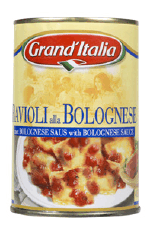Short Studies: 1. Modular Bolognese
Paradoxes of postmodern education.
In a series of small texts, which I'm on the way to publish, I will develop some easy accessible thoughts concerning Diamond Strategies and Diamond Category Theory. I will collect those studies under the umbrella of Short Studies.
With all those studies I will develop some application of the Diamond Strategies to well known topics, like modular education, transdisciplinarity, human rights, Kantian Maxim, plagiarism, fashion and social networking.
The first 4 studies in progress are listed below:
Modules in Metaphors
Without doubt, I like Spaghetti Bolognese. Especially, the Bolognese between the spaghetti. Even more, I like the Bologna Reform, which is unifying European education. As we had to learn, spaghetti in their chaotic wildness are not supporting the desires of clean decomposability and reusability, needed for real-time control and surveillance. Like it happened with ravioli, the Bologna Reform invented the modularity of knowledge for university education. Each topic has to be framed by its module. Each module is cleanly separated from the other modules. Like ravioli, which are coupled only loosely and are building, ideally, a cluster, each module has its own content, structured hierarchically into topics, sections and paragraphs, enabling its specific taste and evaluation.
[A full-fledged theory of the Pasta Strategies is available at the complete Pasta Theory of Software Development. The present text about Noodles will be published at Moodle.]
But ravioli are nothing without their sauce! That’s obvious and natural for the people of Bologna. But hard to understand north of the Alps. What are we doing with the sauce? Is it simply another module? But how can the in-betweeness of modules in a modular system be itself a module? This contradicts academic logic; it maneuvers you immediately into headaches of logical paradoxes.
If the module between the modules is itself a module, what is the in-betweenness between this conglomerate of modules, such a meta-module, and the original modules themselves? A meta-meta-module or simply nothing? Or is it the para-module of fluidness and fuzziness, defined by Water Logic? Do we need a proto-module to manage this new inter- and trans-modular wilderness? What happens if the sauce between the ravioli becomes a sausage?Is the sausage an ultra-module? It belongs to the modular system exactly if it doesn't belong to the modular system. The sausage is a module exactly if it is a ravioli and at the same time it is a ravioli if it is a sausage.
And by the way: Is the logic of this argumentation itself a module or is it superior or prior to all modules? Is it a a module with its own subversive logic or simply a pseudo-module? There are not many chances left to solve this paradoxical problem. One radical strategy tells you: Eat the sausage and forget the problem!
Yes, but what are we doing with a ravioli Bolognese without sauce? We simply could smash the dry ravioli into the bin. All problems solved! But there is another solution too: Mediate the ravioli and the sausage with a brand new sauce, well mixed, half ravioli and half sausage. This strategy has a safe legitimation and is best evaluated by the tools of Fuzzy Logic.
Unfortunately, the Fuzzy Strategy is of short reliance as it is demonstrated in my Warentest paper, which is probably the very first evaluation of the reliance of logical systems for interactive devices in commercial telecommunication. Ok, the game has to go on. Why not introduce, just for academic reasons, a new mega-sausage between the ravioli and the first sausage and the ravioli and the mixed – fuzzy based – sauce consisting of ravioli and sausages between the real ravioli and the real sauce Bolognese? But what’s real in such an administrational intervention? The sauce, the ravioli, the sausage or the content in the ravioli or the European administrators of the ravioli complot?
Ok, the game has to go on. Why not introduce, just for academic reasons, a new mega-sausage between the ravioli and the first sausage and the ravioli and the mixed – fuzzy based – sauce consisting of ravioli and sausages between the real ravioli and the real sauce Bolognese? But what’s real in such an administrational intervention? The sauce, the ravioli, the sausage or the content in the ravioli or the European administrators of the ravioli complot?
Even worse, a good Bolognese is not a homogenous module, it is in itself full of well-balanced differences of overlapping interactions of different strength. Hence, the interplay between ravioli is not modular but sub-modular. Ravioli are building 3-dimensional clusters, and only a few of them are showing a flat hierarchical order of composition. It is more than clear, that the content of a single ravioli Bolognese is of no interest at all. What is of interest is the clear cut distinction between the shape and content of each ravioli and the disjunctive separation from other ravioli.
It is more than clear, that the content of a single ravioli Bolognese is of no interest at all. What is of interest is the clear cut distinction between the shape and content of each ravioli and the disjunctive separation from other ravioli.
Nevertheless, each single ravioli has to pass a general test of quality: measure, weight, taste, design, originality. The evaluation is general or even universal because each ravioli is tested by strict scientific and objective quantificational methods.
There are surely differences in the general cluster, there are ravioli for the beginner, ravioli for the advanced and ravioli for the post-docs and ravioli for the tester and ravioli for the administration, etc. And all are fitting well into the European ontology of modularized knowledge taxonomies and ontologies and the qualifications of the generalized European user of the Semantic Web.
FULL TEXT here.
http://www.thinkartlab.com/pkl/media/transMODULE/transMODULE.html
In a series of small texts, which I'm on the way to publish, I will develop some easy accessible thoughts concerning Diamond Strategies and Diamond Category Theory. I will collect those studies under the umbrella of Short Studies.
With all those studies I will develop some application of the Diamond Strategies to well known topics, like modular education, transdisciplinarity, human rights, Kantian Maxim, plagiarism, fashion and social networking.
The first 4 studies in progress are listed below:
- Modular Bolognese. Paradoxes of postmodern education.
- Birds and Diamonds in Second-Order Epistemology
- Primary thoughts to a Manifesto for Awareness Fashion Marketing
- Diamond Web2.0. How social is social networking?
- Modular Bolognese –
Modules in Metaphors
Without doubt, I like Spaghetti Bolognese. Especially, the Bolognese between the spaghetti. Even more, I like the Bologna Reform, which is unifying European education. As we had to learn, spaghetti in their chaotic wildness are not supporting the desires of clean decomposability and reusability, needed for real-time control and surveillance. Like it happened with ravioli, the Bologna Reform invented the modularity of knowledge for university education. Each topic has to be framed by its module. Each module is cleanly separated from the other modules. Like ravioli, which are coupled only loosely and are building, ideally, a cluster, each module has its own content, structured hierarchically into topics, sections and paragraphs, enabling its specific taste and evaluation.
[A full-fledged theory of the Pasta Strategies is available at the complete Pasta Theory of Software Development. The present text about Noodles will be published at Moodle.]
But ravioli are nothing without their sauce! That’s obvious and natural for the people of Bologna. But hard to understand north of the Alps. What are we doing with the sauce? Is it simply another module? But how can the in-betweeness of modules in a modular system be itself a module? This contradicts academic logic; it maneuvers you immediately into headaches of logical paradoxes.
If the module between the modules is itself a module, what is the in-betweenness between this conglomerate of modules, such a meta-module, and the original modules themselves? A meta-meta-module or simply nothing? Or is it the para-module of fluidness and fuzziness, defined by Water Logic? Do we need a proto-module to manage this new inter- and trans-modular wilderness? What happens if the sauce between the ravioli becomes a sausage?Is the sausage an ultra-module? It belongs to the modular system exactly if it doesn't belong to the modular system. The sausage is a module exactly if it is a ravioli and at the same time it is a ravioli if it is a sausage.
And by the way: Is the logic of this argumentation itself a module or is it superior or prior to all modules? Is it a a module with its own subversive logic or simply a pseudo-module? There are not many chances left to solve this paradoxical problem. One radical strategy tells you: Eat the sausage and forget the problem!
Yes, but what are we doing with a ravioli Bolognese without sauce? We simply could smash the dry ravioli into the bin. All problems solved! But there is another solution too: Mediate the ravioli and the sausage with a brand new sauce, well mixed, half ravioli and half sausage. This strategy has a safe legitimation and is best evaluated by the tools of Fuzzy Logic.
Unfortunately, the Fuzzy Strategy is of short reliance as it is demonstrated in my Warentest paper, which is probably the very first evaluation of the reliance of logical systems for interactive devices in commercial telecommunication.
 Ok, the game has to go on. Why not introduce, just for academic reasons, a new mega-sausage between the ravioli and the first sausage and the ravioli and the mixed – fuzzy based – sauce consisting of ravioli and sausages between the real ravioli and the real sauce Bolognese? But what’s real in such an administrational intervention? The sauce, the ravioli, the sausage or the content in the ravioli or the European administrators of the ravioli complot?
Ok, the game has to go on. Why not introduce, just for academic reasons, a new mega-sausage between the ravioli and the first sausage and the ravioli and the mixed – fuzzy based – sauce consisting of ravioli and sausages between the real ravioli and the real sauce Bolognese? But what’s real in such an administrational intervention? The sauce, the ravioli, the sausage or the content in the ravioli or the European administrators of the ravioli complot? Even worse, a good Bolognese is not a homogenous module, it is in itself full of well-balanced differences of overlapping interactions of different strength. Hence, the interplay between ravioli is not modular but sub-modular. Ravioli are building 3-dimensional clusters, and only a few of them are showing a flat hierarchical order of composition.
 It is more than clear, that the content of a single ravioli Bolognese is of no interest at all. What is of interest is the clear cut distinction between the shape and content of each ravioli and the disjunctive separation from other ravioli.
It is more than clear, that the content of a single ravioli Bolognese is of no interest at all. What is of interest is the clear cut distinction between the shape and content of each ravioli and the disjunctive separation from other ravioli. Nevertheless, each single ravioli has to pass a general test of quality: measure, weight, taste, design, originality. The evaluation is general or even universal because each ravioli is tested by strict scientific and objective quantificational methods.
There are surely differences in the general cluster, there are ravioli for the beginner, ravioli for the advanced and ravioli for the post-docs and ravioli for the tester and ravioli for the administration, etc. And all are fitting well into the European ontology of modularized knowledge taxonomies and ontologies and the qualifications of the generalized European user of the Semantic Web.
FULL TEXT here.
http://www.thinkartlab.com/pkl/media/transMODULE/transMODULE.html

0 Comments:
Post a Comment
Links to this post:
Create a Link
<< Home